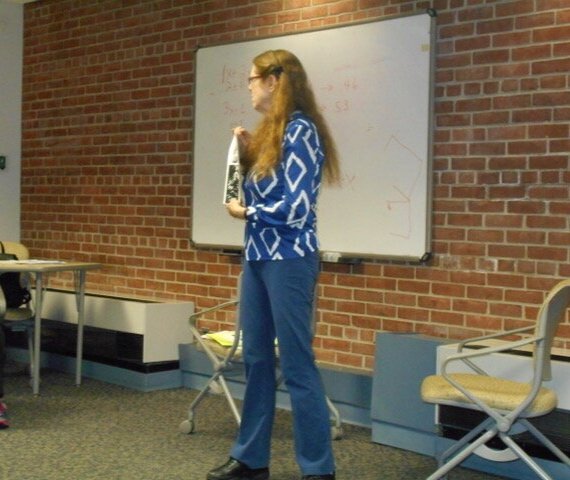
Group and Individual Instruction
in Math and Other Subjects
More information for:
My name is Barbara Bernstein and I hold a Ph.D. in Education and a Master’s Degree in Mathematics Education from the University of Maryland. I have taught college, high school and middle school Math classes with a specialization in grades 5 to 10. I've also published articles on teaching methods and educational psychology. I explain things from the ground up, so that students grasp the underlying concepts instead of just memorizing rules or formulas.
I can teach large school classes as well as tutor individuals—in person or remotely. I teach Zoom classes with a document camera so I can write things out and they look the same as they would on a blackboard or whiteboard. I'm very flexible and happy to construct a unique program of instruction to suit individual needs. This can include after-school or summer school programs, etc.
My mission is to cut through convention to achieve learning in ways that are comfortable for students. This means first, recognizing that students’ mistakes are their best learning tool. We examine mistakes to see how a student is thinking and where they need help. It also means frequently including review questions rather than covering only one topic in a lesson. Retention and understanding are both vastly improved when teachers move back and forth between different topics, giving the material time to “sink in.”
Ever heard a student say that they understood a math problem and did all the steps correctly, but they just made a calculation error? The implication is that the error "wasn’t important" since they do know the material. However the concept of a student understanding something perfectly well, and simply making an arithmetic mistake is misleading. This can indeed happen. But the fact is that when someone knows a mathematical process very well, they are less likely to make such mistakes. When students have to think about what step comes next, their attention is on how to solve the problem. So they aren't as focused on the arithmetic. This makes mistakes more likely. (Think of how much more likely you are to make a mistake when you are distracted, for example.) Calculation errors are sometimes a sign that the student may not be that solid on the material so it’s best not to totally dismiss them.
These and other insights guide my instruction as I work to help students understand math rules and algorithms rather than just memorize the steps.
*************************************************************************************************
Note that this website has many FREE instructional videos. They cover adding, subtracting, multiplying and dividing with fractions, percents, and decimals. There are also videos on working with exponents and solving equations in one and two unknowns. Feel free to share them with friends.
I teach primarily in Mathematics, but often help with other subjects too.
Please contact me to describe what you are looking for and discuss time slots, fees, etc.
